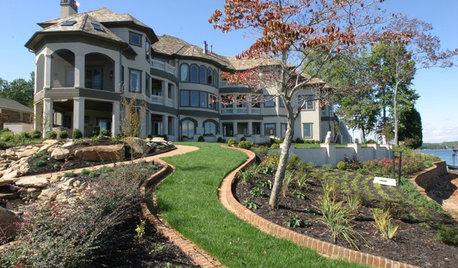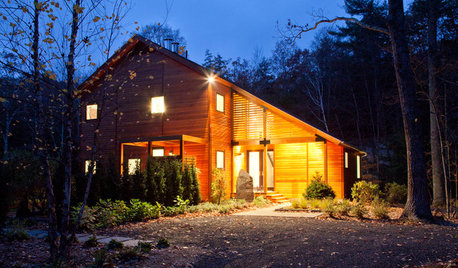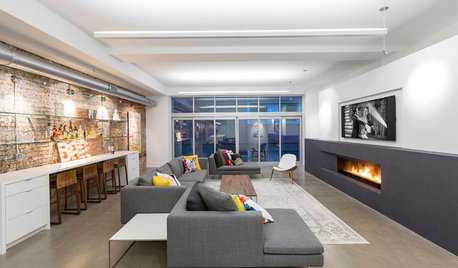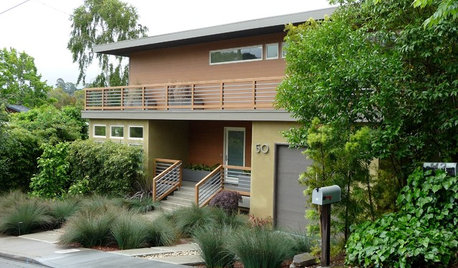Separation of Data Lines from Electric Lines
I know I'm supposed to keep data lines (cable, Cat 6, etc) away from electric lines, but I don't know the details.
1) How far is a minimum distance to keep between electric and data lines?
2) Does this apply only to parallel lines or lines crossing at right angles as well?
3) Does conduit provide adequate insulation of the data wires?
4) Can I run cable and Cat 6 together or do they need to be separated too?
Comments (29)
Ron Natalie
13 years agoThere is NO SUCH requirement either mandated by the electrical code, nor recommended by the standards bodies that set the rules for the cabling or the current popular networking protocols that run over it.
The whole point of using TP wiring is to design circuits that are resistant to such forms of interference. In practice, no matter how far away you are from the power wiring, absent conduit, you're going to get coupling to the power lines.
The only issues are when you run the low voltage wiring into boxes or other places where power wiring terminations are made. The low voltage wiring may not have insulation rated for that use (600V) and further you don't want to subject LV terminations to possibly coming in contact with higher voltages. While they make dividers, etc..., it's just better practice to use separate boxes for power versus phone and data.
spafrica2003
Original Author13 years agoPerhaps I should clarify:
I'm talking about just running the wires through the walls of my home. I need to know what recommended (not code required) distance to keep my Cat6 and cable lines from my standard 110v 12-2 power lines running through those same walls. Also, does running cable and Cat6 side-by-side create interference with each other, or is it just power that causes interference?Related Professionals
Three Lakes General Contractors · Anchorage General Contractors · Banning General Contractors · Beloit General Contractors · Dardenne Prairie General Contractors · Sterling General Contractors · Summit General Contractors · Towson General Contractors · Forest Park Solar Energy Systems · North Tustin Solar Energy Systems · Old Saybrook Solar Energy Systems · Fort Collins Home Automation & Home Media · Hollywood Home Automation & Home Media · Jollyville Home Automation & Home Media · Los Angeles Home Automation & Home MediaRon Natalie
13 years agoI don't know how to make it any clearer. There's no requirement nor recommendation (from any authoritative body) that 12-2 power wire and your cat6 data wiring need to be separated.
DavidR
13 years agoI'm not a pro, but rather a long-time audio guy and electronics hobbyist. So some of the pros may disagree, but I base this recommendation on my own practical experience.
While code doesn't mandate any separation, IMO good practice calls for keeping electrical wiring and signal or data wiring at least several inches apart where they run parallel.
The problem is the possibility of induced noise in the signal or data cable. The electrical wiring will not be affected in any way.
There is little concern if the wiring is in a grounded metallic raceway, or if the data/signal cable is well shielded. Using thinwall conduit or AC cable instead of NM would take care of the problem easily.
I still wouldn't zip tie an unshielded data or signal cable to conduit, but otherwise you should be fine.
If you're using NM cable, in addition to the separation, I recommend a twist or two per foot in the electrical wires, to help cancel out EM radiation from them.
steve_o
13 years agoAnd if low-voltage and electric cables need to cross, doing it at right angles minimizes the interference.
Ron Natalie
13 years agoBelieve the golden ear nonsense if you like, but the fact is as I stated, nobody who has a clue recommends what David and Steve suggest. There is so much induced EMF in your house that all this voodoo they are suggesting (twisting the power lines, crikes) is going to do squat. The TP networking stuff is all already well equiped to deal with such.
brickeyee
13 years ago"If you're using NM cable, in addition to the separation, I recommend a twist or two per foot in the electrical wires, to help cancel out EM radiation from them. "
Twisted pairs are already that, twisted.
At about one turn per inch.
Twisting the power lines is not going to make any real difference.
Perpendicular crossing is only effective against magnetic field coupling.
Any communications system that is going to have problems with 60 Hz power electric and magnetic fields is not going to work well no matter what.
The fields are endemic in buildings from the wiring (though magnetic fields from power conductors actually cancel nicely at any reasonable distance).Ballasts and larger electric motors are not nearly as nice, especially when they are turned off.
The collapsing field in the motor tends to put a lot of noise onto the power lines, with a frequency that decreases as the motor slows to a halt.Low frequency noise is much harder to filter, requiring larger values of capacitors and inductors.
Coax with both braid and foil coverage is very effective at isolating noise.
High power magnetic fields are the hardest to shield.
If they are a low frequency it can take a very thick shield to have any effect (and better conductors like copper are more effective on time varying magnetic fields than poorer conductors).A magnetic field can couple in to ground loops, but multiple grounds are required for effective electric field shielding at high frequencies.
In many cases what works for one type of coupling can make the other worse.
Kevin M
8 years agoSpafrica203, , I think what David said has some validity. What Ron has said about the newer cabling shielding is also correct to a point. In the power generation industry that I retired from, there are cables for data that are ran in cable trays containing 480v three phase circuits, dc circuits and they don't have any issues. We tied the shielding of each cable to ground on 1 end to deal with the induced noise. In one power plant there are trays 10 rows high and 300 feet long filled 3 inches or more deep(overfilled) with a mixture of 0-600V and comm cables. In transmission systems and longer power runs we do transpose the phases( cross them) to negate or cancel the induction. If you look up on transmission lines along the road, you will see them swap from outside to center every few poles. Ron has a hard time not being a butthead in his answers to others. Your question was very clear and a good one. I think that if it is possible to maintain a few inches from your 120-220v ac house wiring it is better. I do not know of any set distance between comm and 110v wiring due to the difference in field strength related to voltage and current differences in ac lines. But do not for any reason terminate in the same box both comm and power leads! This is dangerous to others working on the comm system and increased noise on comm wires.
Ron Natalie
8 years agoPoint out anything I said that was incorrect. I wasn't being a butthead but clarifying what I already said. There is no requirement nor recognized recommendation for separating any digital wiring that uses CAT5 or 6 cabling from standard household wiring.
And yes, I'm an Electrical Engineer too that worked with 13KV power distribution, but we're not talking about that here.Kevin M
8 years agoRon, I have followed Mike Holt on many occasions and learned a lot from him. (most of it I have forgot). I see he contradicts statements from your comment earlier.
Installation
Never attach communications cable to, or support it with, raceway
[300.1] or the power service mast [230.28]. Support via “cable tie to conduit”
is not an acceptable method.[800.52] Communications cables can be in the same raceway or
enclosure with cables of any of the following (see Figure 800-19 un800-19 800-52A1a1.cdr):- Class 2 and Class 3, Article 725.
- Power-limited fire alarm systems, Article 760.
- Nonconductive and conductive optical fiber cables, Article
770. - Community antenna television and radio distribution systems,
Article 820. - Low power network-powered broadband communications circuits,
Article 830.
Communications cables cannot be in the same cable with Class
1 circuits. Class 2 and Class 3 circuit conductors can be in the same cable with communications
circuits, if the Class 2 and Class 3 circuits are contained in listed communications cable
or multipurpose cable (see Figure 800-20 un800-20 800-52A1b 725-56D1.cdr).You cannot run communications conductors in any raceway, compartment,
outlet box, junction box or similar fitting with conductors of electric light, power or
Class 1 circuits. Of course, there are exceptions:- You separate the conductors from the power or Class 1
conductors by a barrier. - You introduce power circuit conductors solely to connect
to the communications equipment. The power circuit conductors require a minimum of
0.25 in. separation from the communications circuit conductors.
In other applications, you must separate communications conductors
by at least 2 in. from any electric light, power or Class 1 circuit conductors-unless
you install those electric light, power or Class 1 circuit conductors per a Chapter 3
wiring method (raceway, metallic or nonmetallic sheath, or UF cable). (See Figure
800-21 un800-21 800-52A2x1.cdr).When you install communications wiring and equipment in hollow
spaces, vertical shafts, ventilation or air-handling ducts, do so in a way that does not
substantially increase the possible spread of fire or products of combustion. Use approved
firestops for openings made in fire-rated walls, floors and ceilings (see Figure
800-22 un800-22 800-52B 01 300-21.cdr). If there’s any abandoned cable,
remove the accessible portions (see Figure 800-23 un800-23 800-52B 02.cdr)
to limit the spread of fire or products of combustion within a building. This rule does
not require the removal of concealed cables.Article 800 can be a bit dizzying, if you try to memorize all
of its listing requirements and other details. These things, important as they are, primarily
support two concepts. One of those is that you must maintain firestop integrity. The other
is you must maintain separation from higher energy levels that require more stringent
wiring methods and protection. If you keep these concepts in mind as you work with Article
800, you’ll be able to ring up one job after another with no callbacks for code violations.
Copyright © 2002 Mike Holt Enterprises,Inc.Ron Natalie
8 years agoMike Holt is a great guy and I don't disagree with anything he said and nothing he said disagrees with the information I gave. Cat 6 can go right up against NM-enclosed cables.
Ron Natalie
8 years agoAgain, despite old wives tails in the industry, there's no reason nor requirement to separate cat 5/6 from NM cabling in residences. You're going to have more problems from bonehead installation of the terminations than your going to have "inductive" effects.
joel rambaud
7 years agoRon Nathalie
No you cannot not , should not run any communication cables "fiber optic aside" anywhere near or parallel any electrical line whether High voltage such as service entry or inside building regardless of conduit , recommended outside is 12" .
Should you have experience in such system you would know it , I have , as there is nothing more embarrassing after running 100 feet of multiples cables , Audio Video in an underground cable for a US Gov. Agency and at testing time you get the Gospel Station from 100 miles away , the power line was simply a giant antenna , nowadays you even have phone line running thru the power line . We use all the filters available {most not to the public or even commercial at the time}
You will never find such arrangement in any high quality audio / video .
And yes there is are Codes regulation which I do not have NEC number but it is there , please do not give 1/2 true information , Having that Gospel Station throughout that Gov Agency was far more than embarrassing ..... every single component had to be debugged
But then again this is only my WORKING EXPERIENCE .
Ron Natalie
7 years agoI didn't give "half true" information. Everything I said is 100% true and is supported by the codes, the standards for the cabling systems involved, and decades of personal practices running cable plants for the Army, the state university system, and private customers.
First, if you'd bothered to read any of the statements I wrote, you'll see we were talking about cat 5/6 data networking wire. Not audio cables, not video. Your statements, therefore while useful for that wiring, have nothing whatsoever to do with the question asked here or my comments. These days, it's actually getting less and less common to have ANALOG video or audio run ***ANYWHERE***. Your comments are from the last century.
By the way, if you're coupling in RF into your audio circuits, you've got bigger issues than how close the power lines are.Second, you're blowing smoke about the codes. There's nothing in the NEC about crosstalk period. It's unconcerned about it. It's not a safety issue. There's no separation requirement in the code between low voltage cables (of any sort) and power CABLES. You find an actual cite in the code otherwise. Article 800.52 pretty much defines it. It states that when power conductors are in a cable or conduit system no separation is required.
Vith
7 years agoCodes or not, good practice trumps all. This topic has nothing to do with safety. It has to do with glitches in the data line.
Running low voltage data lines parallel to high or standard voltage electric lines simply is not good practice. We are talking about sending a lot of info long distances in these data lines and any little glitch potentially caused by any slight induction causes data packets to fail and be resent which slows speeds down. I would trust the engineers that work in the phone and internet industry concerning this topic.
Now that being said, the data lines shouldn't be directly touching the electric and running parallel. A couple inches separation does the trick, because of the insulation provided on both lines.
Kevin M
7 years agoRon, Vith,
Guys I just wanted to throw in my 2 cents. I worked in a large hydro plant for 22 years and retired as a electrician/lead electrician. In this plant we had cable trays the length of the plant 300' and 10 rows high. These trays contained 480 three phase motor control center feeder cables 250mcm, 500mcm balogna cable, DC control cables, AC control cables, cat5, cat6, fiber, you name it it was in them 3" deep. In fact if you looked up tray fill, they were overfilled. It is my personal experience that these cables lived fine with each other. We had a control tech team that services the RTU's and supervisory equipment, there were never issues with induction, transient signals, noise. While they were thrown together in the trays, I suppose it would be proper to have them with some isolation between them, it is certainly not necessarily required to function properly. When the plants were built in the 1960's they had old technology, then in the 1980's were bombarded with new technology and new cable types and it never stopped. When I first started we had chart recorders, dashpot timing relays, and Agastat relays you could have filled a dumpster with them. (and we did) Then came the PLC's ,RTU's, solid state protection, electronic governors. So then the new cabling had to be ran. I and the crews ran miles and miles of the stuff. This was common practice in both of our hydro plants. By the way these two plants totaled 1200MW, so they were not tiny plants. I see both of your statements contain truths, and I am sure you both have experience, but there is no truth that they wont co- exists in close proximity. Just saying.
Ron Natalie
7 years agoThere is nothing other than old wives tales and unsubstantiated assertions that power coupling is going to be an issue with twisted pair ethernet. I've got 30 years of experience in facilities work including running the data networking (and hand in hand with the power guys) for the state university system of NJ. It has NEVER been a problem. The whole POINT of twisted pair networking is to avoid problems with such coupling (can you say differential?). I've had more problems with people not TERMINATING the wires right (mostly not keeping the twists all the way to the connector) than with cable placement.
Kevin M
7 years agoRon, I can't see the need to get hostile toward anybody on this topic. You and I and many others have lots of experience with cabling. I agree with your statements as my comment stated. In our power plants we brought the Belden twisted pairs into the cabinets with the jacket stopped at times a foot and a half or more from the device, (RTD monitors, recorder or PLC, or what ever), and untwisted the pairs because they went to different locations. This never caused a problem. As you know what does cause a problem or can cause one is grounding the shield at both ends of the cable. We usually had a 5 or 6 ft long copper ground buss that we made up( drilled and tapped) and mounted it in the cabinet. There we terminated the bare shielding wires from the many cables. Soldered Burndy lugs on all ground and signal carrying conductors. Clamp or pressure terminated wires were used on some equipment that had those kinds of terminations, however they were avoided as much as possible. One problem with them was it made it harder to lift and lay back down the wires during troubleshooting or testing as the wires fray and are difficult to get back under the screw, especially when energized. And we had one guy that always made the strands of wire look like a worn out paint brush when he laid down those wires. At least 1/4 of the strands were sticking out. Terrible!
One time we got a new pre-wired cabinet in from a manufacture and when we were putting the equipment into service it was not working. So naturally we looked at our own wiring and found no wires laid down wrong. After much troubleshooting we found where the manufacture had stripped the wire correctly but got the insulation under the screw where the conductor did not make contact. Boy that drove us crazy!
Anyway, from one old sparky to another, good luck.
Vith
7 years agolast modified: 7 years agoOld wives work as IT engineers? Learn something new every day.
The old wives agree, when dealing with tiny little wires and many tiny little voltages sent at specific times, that any disruption of those little voltages messes up the signal. This could happen when the electric wire fluctuates in current and the magnetic field changes causing induction in the data line. This wouldnt really be a problem if the data lines were not so tiny at 24 gauge. Also this is not catastrophic or a HUGE deal, but it could potentially slow speeds down for a second or two or possibly cause a disconnect from an online game, which in the grand scope of things not a huge deal but if your at a critical moment in the game and it happens or it happens often I am sure you will be thrilled :)
joel rambaud
7 years agolast modified: 7 years agothere are o 10 different rules to begin regulating data cable and power cables in the NEC .
The only time they are allowed together is to give power to equipment and they must be separated by a non conductive barrier in addition they must have certain clearance .
For the gentleman running a power plant it is prohibited to run data cable with power cable , they must be in an approved raceway or conduit away from the power , they may not be attached to May conduit or electrical wire of any type whether it is inside or outside , they may not be attached to service entrance and or rigid conduit in addition at the entry point they must be grounded ,{copper rod in the ground } I love to list all the references number but for the sake of simplicity that is the NEC code .
As for the Gentleman which ran installation in New Jersey , seen my share of building site Here in California , they rarely allowed IT people running cables , not that it was below their paycheck , they had their share of misery .
likewise for coax
Likewise for low voltage.
Likewise for fiber optic cable . Logic behind it , leave electricity alone ....
So please Ladies and Gentlemen before posting wrong information please do a basic search as I have , because your information may very well Kill someone aside of giving them a lousy 1900 era communication .
A Journeyman has sued His employer for getting electrocuted "survived" by migrating power in a data cable during construction and won {BIG $$$} . I just love to see 100 computers hooked up to that data line and see them going in smoke , if the code does not address it the lawyers will , either way you loose .
Ron Natalie
7 years agolast modified: 7 years agoThe part about non-conductive dividers is the separation when the wiring are in the same box. It's got nothing to do with what we're talking about which is running data wiring next to power cables (other than terminations).
The operative part of the NEC is Article 800.113. We're not in a raceway in the situation we're talking about. So paragraph (2) applies:
2) Other Applications. Communications wires and cables shall be separated at least 50 mm (2 in.) from conductors of any electric light, power, Class 1, non–power-limited fire alarm, or medium-power network-powered broadband communications circuits.
Exception No. 1: Where either (1) all of the conductors of the electric light, power, Class 1, non–power-limited fire alarm, and medium-power network-powered broadband communications circuits are in a raceway or in metal-sheathed, metal-clad, nonmetallic-sheathed, Type AC, or Type UF cables, or (2) all of the conductors of communications circuits are encased in raceway.
So again, you can run type NM power cables right up against communciations wiring without code issue.
Again, I respectively point out that your anecdotal stories are not supported by the CODE for safety issues. Nor are they part of any recommendation by any standards body covering the operation of the network systems in question.
If you can find anything in the NEC that says otherwise, I'll be glad to see it.
Kevin M
7 years agoJoe thanks for the post, but before you make statements about my "anecdotal stories" of running power with low voltage, this running these 600v TC rated insulated data cables next to TC rated NM power cables is what we did. You will notice in the code that they specifically address "conductors" not allowed. It is in the code to allow cables rated at the same or higher voltage to be in the same raceway. So I fail to see what your statement has any connection as to my statements. We were talking about noise from the close proximity of the cables. Your rambling away with this statement "For the gentleman running a power plant it is prohibited to run data
cable with power cable , they must be in an approved raceway or conduit
away from the power , they may not be attached to May conduit or
electrical wire of any type whether it is inside or outside , they may
not be attached to service entrance and or rigid conduit in addition at
the entry point they must be grounded ,{copper rod in the ground } I
love to list all the references number but for the sake of simplicity
that is the NEC code" must be to just hear yourself talk. I am not sure what you were trying to say about "May conduit" or electrical wire. I never talked about entrance conductors or attaching to conduits. I never mentioned anything of the sort. These cables are never, repeat never terminated in or near power circuits. Once the jacket is broken it is out of the tray and separated by duct mold in a cabinet.Ron Natalie
7 years agoThank you, Kevin. As pointed out the NEC is unconcerned about "noise" issues, just safety and the NEC permits you to slam a cat 5 right up against NM cabling as I have shown the code citation.
As for noise coupling, we can talk specifics. First, two inches or two feet, it much doesn't matter. If you are running long runs of wire along side of power, there will be AC coupling. It's pretty impossible to avoid. The question is: what difference does it make. First off, the whole point of twisted pair is a differential signal. A differential signal is relatively immune to such coupling. This is why high end analog audio almost always uses such. The second issue is we're talking about a very high speed DIGITAL signaling.
Let's take gigabit ethernet, a common data standard in use today. It's defined in the IEEE 802.3 1000BaseT document. Note that nowhere in that document does it advocate spacing. It does describe what the standard does to make it resistant to noise. Coupled 60 cycle hum isn't even an issue. It's easily filtered out. More problematic are things like being up ringing telephone circuits and impulse noise caused by switching on and off electrical appliances. Again the standard takes these into account. Hence neither the 802.3 series documentation nor the CAT 5 or 6 wiring standards any physical separation. Lots of people have rules of thumb or what they were told to do or what they've always done, but as a practical requirement, there is no spacing requirement.misskellaneous
5 years agoThe 2017 NEC is clear. It strictly prohibits running ANY communications conductors in the same raceway or conduit as ANY power circuits.
800.133 (A)(1)(c) Communications conductors shall not be placed in any raceway, compartment, outlet box, junction box, or similar fitting with conductors of electric light, power, Class 1, non-power-limited fire alarm, or medium-power network-powered broadband communications circuits.
Exception No. 1. 800.133(A)(1)(c) shall not apply if all of the conductors of electric light, power, Class 1, non-power-limited fire alarm, or medium-power network-powered broadband communications circuits are separated from all of the conductors of communications circuits by a permanent barrier or listed divider.
Exception No 2. Power conductors in outlet boxes, junction boxes, or similar fittings or compartments where such conductors are introduced solely for power supply to communications equipment. The power circuit conductors shall be routed within the enclosure to maintain a minimum of 6mm (1/4 in.) from the communications circuit conductors.
Ron Natalie
5 years agoWhat part of Exception #1 don't you understand?
Again, we're not talking conduits and raceways here. We're talking about residential Type NM cabling and adjacent Cat 5/6 communication cables.Brett Peters
4 years agoJust in case anyone else is jumping in here to check minimum distances for data cabling, I'm a data cabler with 20 years experience in the industry, currently studying for my RCDD and writing a structured cabling course of my own.
Bicsi standards dictate 50mm safety distance from any other service, 200mm bare minimum to reduce EMI from LV electrical (power/lighting etc) but 300mm or a physical metal barrier is the agreed upon standard in the data industry when running parallel.
It doesn't matter as much for 10/100Mb systems, but once you start going past Gig, it does. Install for the future, not just today. The same cables can be used at increasing speeds in a good installation.
Shielded cables matter even less about minimum distances, but 300mm is still a standard that all decent data technicians stick to.Ron Natalie
4 years agoNice that you mention BICSI, but show me where they make such a recommendation. BICSI doesn't invent recommendations, they just apply the various standards including NEC and the various data wiring requirements. Never heard any 300mm separation requirements other than that for access requirements.



















bznbaker